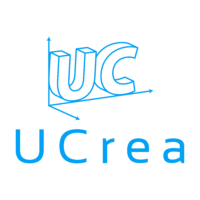At a time where large size, high quality and affordable desktop 3D printers like the Bambu Lab X1 and P1 series, the Sovol SV07 and SV08, the Prusa MK4 and XL and the creality Ender v3 and K1 series now cost under $3 000, it might be tempting to purchase a 3D printer for your office. Whether you print architectural models, engineering prototypes, artificial limbs or figurines, the reality of operating a 3D printer is the same. This article will guide you in determining the real cost of owning a 3D printer. Every company has unique needs. As such, it will be up to you to fill in the blanks.
Ongoing costs
PLA, PETG or Nylon can costs roughly $40/kg for a good quality filament. This can go above $100/kg for more advanced materials. Most resins for
SLA printers run for around $50/L. Depending on your yearly use, you’ll likely spend more on filament or resin than the cost of your machine over its lifetime. Electricity costs are negligible as most printers consume around 200W of power. Electricity in most places cost a few pennies per KWh. Determine how many prints you’ll be printing every month and the size of the models in order to estimate your ongoing costs.
Depreciation
Technology is continuously advancing. After some time, more frequent downtime from your aged equipment will render it less useful. Considering this, it’s safe to assume the professional value of your printer will be close to zero three years from now. Add a third of your printer’s purchase price to your yearly costs.
Maintenance, repairs and troubleshooting
All 3D printer manufacturers claim their machines to be reliable. That said, you’ll likely run into issues every now and then. You may have to replace a worn-down nozzle or restart a failed print because a filament was left exposed to humidity. Sometimes the problem is in the design. A print failed because you or your designer didn’t catch a problem in their model before launching a 3d print. Let’s stay conservative and set aside at least one hour every month for maintenance. Add another hour for troubleshooting a variety of issues that may arise with your machine. You’ll also need a few hundred dollars a year for spare parts, nozzle and other costs associated with keeping the printer up and running smoothly.
Operating time
Unless you’ve streamlined your process extensively in-house, you will need close to 40 minutes of pre and post-processing for every new print job you launch on your printer. Setting up the slicing profile to generate the printer tool-path and the slicing itself takes a few minutes. Cleaning and preparing your build plate before a print is essential but time consuming. Monitoring the start of your job and removing and cleaning your model usually takes longer than you may like. The time dedicated to these tasks may seem minimal but things add up quickly. Even more time is needed if your resin parts need to be cured after being printed. The labour cost of operating your in-house additive manufacturing setup might be higher than anticipated.
Training time
Most 3D printer vendors offer some form of training for several hundred dollars, otherwise video series can walk you through the initial challenges. Add to this the internal time needed for you or your team to become familiar with their 3D printer. More resources and time need to be invested to adapt workflow so your team can really make the most out of your new machine.
What’s the alternative?
If you don’t know how to use the best tools in the world you still won’t produce something as nice as someone with less capable tools and the required skill set and understanding.
At UCrea, we have designed and built the pritners we use to produce parts every day. These machines have all the bells and whistles of modern machines and more. More importantly, we know how to work with our machine – perfectly. That means we can get you exactly the result you expect, every time, and fast.
The alternative to owning a 3D printer is outsourcing your 3d print jobs. One advantage is that there is no upfront cost. A major benefit is that you get an added layer of review before a print job is launched. By outsourcing, you tap into the 3D printing expertise of the team you’ve tasked to produce your models. You do not have to spend any employee time monitoring, operating, maintaining or troubleshooting your 3D printers. Not purchasing a 3D printer means you can utilize multiple 3D printing technologies rather than being locked down with using only your machine to justify your investment. Finally, you won’t need to keep track of or invest in technological upgrades.
At UCrea, we offer competitive pricing for your outsourcing needs. Check out our automated quoting tool with your 3D models to get a feel for our pricing.
Contact us at info@ucrea.ca if you want to discuss your particular case and have access to our cost comparison tool to help you make the best decision for your company.


